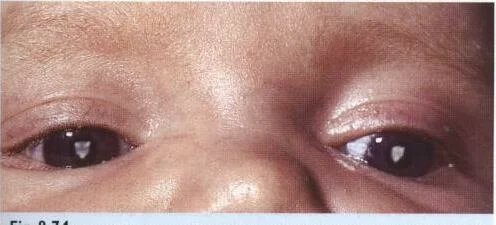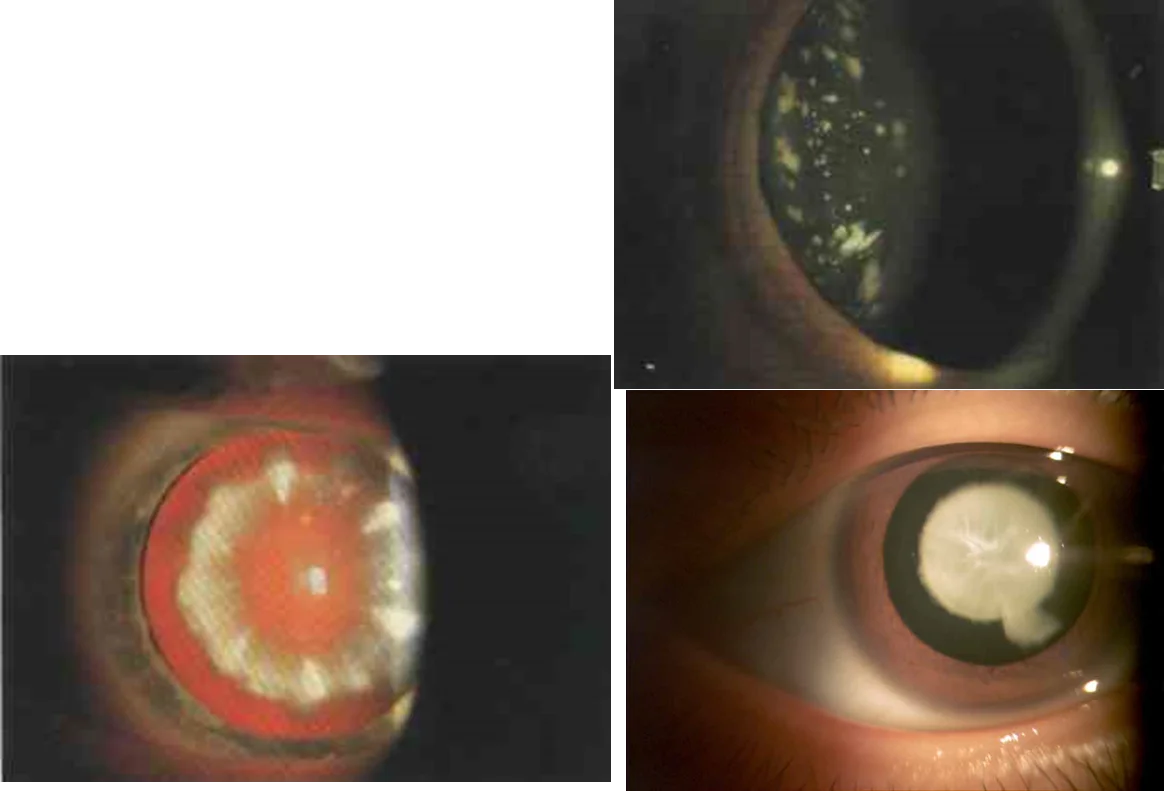Congenital Cataract
- Present at birth or appear shortly thereafter; unilateral or bilateral

Etiology
-
Hereditary
-
Environmental: when pregnancy <3 months
- Virus infection
- Malnutrition
- Radiation
- Drug
- Systemic disease
- Vitamin D deficiency
-
Undetermined causes

Clinical Manifestations
- Symptoms:
- Progressive vision decrease
- Squint - unilateral
- Nystagmus - bilateral
- White pupil
Differential Diagnosis of Leukocoria (White Pupil)
- Cataract
- PHPM (Persistent hyperplastic primary membrane)
- Toxocariasis
- Retinoblastoma Z until proven otherwise
- Retinopathy of prematurity
- Retinal detachment (RD)
- Cyclitic membrane
- Endophthalmitis
retinopathy of prematuriy - due to oxygen therapy vasodilation
Treatment
- Observation
- Early operation
- Amblyopia treatment

Indications for Surgery
- Interfering with a person’s quality of life.
- All dense cataract (unilateral/bilateral)
- Partial cataract with vision less than 6/18.
Timing for Surgery
- The critical period for the development of the fixation reflex is between 6 weeks and 6 months of age.
- So, the best time for surgery is before this period to prevent amblyopia.
In dense monocular cataract, the surgery should be done as early as possible, may be on the next day after birth.
Surgical Techniques
- Lensectomy
- Lens aspiration with PPC, Anterior Vitrectomy (AV)
- Lens aspiration with Primary Posterior Capsulotomy (PPC) and intraocular lens implantation (IOL)
Plan of Surgery
-
< 18 months: Cataract operation only with posterior capsulotomy and correction of Aphakia
-
> 18 months: Cataract operation + IOL implant
-
Phakia: Presence of the crystalline lens in the eye
-
Aphakia: Absence of the crystalline lens of the eye
-
Pseudophakia: “Fake lens” an artificial lens implanted in your eye to replace your own natural lens (IOL).
congenital cataract make ocular ultrasound, if suspected retinoblastoma order orbital CT or orbital MRI Z
observation only to minimal cataract operation as early as possible is best Z
Visual Rehabilitation of Aphakia Z
- IOL: It is perfectly safe and acceptable to perform primary implantation in a child older than 18 months.
- Contact Lens: If no IOL is implanted, contact lenses to prevent amblyopia mainly in unilateral aphakia. Frequent retinoscopy should be performed to decide the power of CL and an overcorrection of +2 to +3D is mandatory.
- Spectacles (glasses) is good in bilateral aphakia. It is not tolerated in unilateral aphakia.
3 months boy suffering from wide pupil in left eye - after examination of ocular ultrasound - there was congenital cataract in left eye.
Cataract operation with contact lens